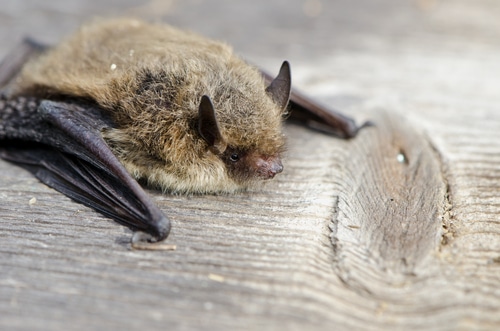Bat Survey, Herefordshire: Protected Species Surveys
What is a Bat Survey?
Bat activity surveys may be required for some developments to assist with planning applications during the planning process to find out whether the development could impact bats in the area. Typically, the local planning authority will let you know whether or not a bat ecology survey is required. The need for bat surveys could also be identified during a PEA survey.
Bat surveys detect when a bat is present or the presence likely absence of bats within the development area so that the planning and development process can proceed. If the survey finds that there is evidence of bats in close proximity to a site, bat mitigation and compensation measures must be undertaken before any development work is permitted to proceed.
These measures are required as bats, and bat roosts within trees, are protected species under the Wildlife and countryside Act, and they are also a European protected species. Therefore, it is illegal to kill, harm or disturb bats in any way.

Bat Survey, Herefordshire: Bat Activity
The active season for bats in Herefordshire is at its peak during the summer months. Therefore, this is the best time of year to carry out survey work to determine the presence of roosting bats.
The many species of bat that are likely to be found in Herefordshire are Greater and Lesser horseshoe bats, Barbastelle bats, Common Pipistrelle bats, Daubenton’s bats, Natterer’s bats, Whiskered, and Brandt’s bats.
Types of Bat Survey, Herefordshire
There are two types of bat surveys which can help you to discover whether signs of bats are present. The first is a preliminary roost assessment which involves an Ecology Consultant carrying out a site visit. They will carry out both an internal and external inspection of the building, looking for evidence of roosting bats, including insect feeding remains as well as bat droppings.
The second type are nocturnal bat emergence surveys involve surveyors using bat detectors to record and analyse bat calls. These surveyors will operate either when bats are leaving their roosts to forage (dusk emergence surveys) or when the bats return to their roosts (dawn re-entry surveys) to determine the number of bats.
How Can Collington Winter Assist?
Collington Winter Environmental, we are an experienced team of ecological consultants with extensive knowledge in undertaking bat and hibernating bat surveys using good practice guidelines. Our Ecology Director, Olivia Collington, holds a Natural England bat survey class licence and has worked with protected species throughout the UK.
Please contact our Ecology Director Olivia Collington via email (Olivia.collington@collingtonwinter.co.uk) for information on protected species surveys, such as bats and great crested newts. We also provide ecological appraisal and assessment services.
Contact Us
Registered Address
23 Bark Street East, 1st Floor, Bolton, BL1 2BQ
Cambridge Office
Future Business Centre, Cambridge Campus, Kings Hedges Road, Cambridge, CB4 2HY
Leicester Office
Rutland House, 23-25 Friar Lane, Leicester, LE1 5QQ
Bristol Office
Newminster House, 27-29 Baldwin Street, Bristol, BS1 1LT
Telephone
Head Office: 01204 939 608
Dumfries Office: 01387 378208

